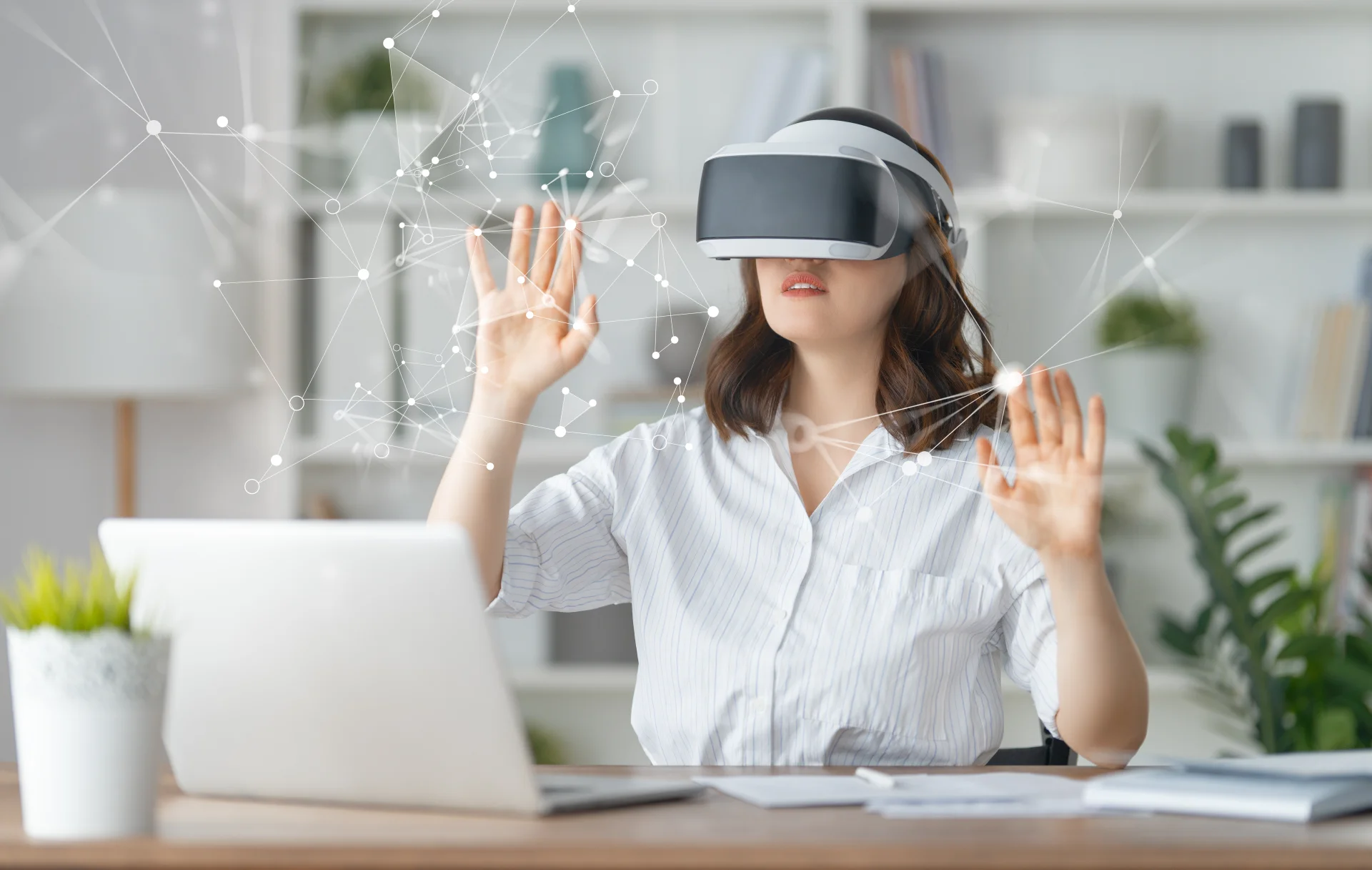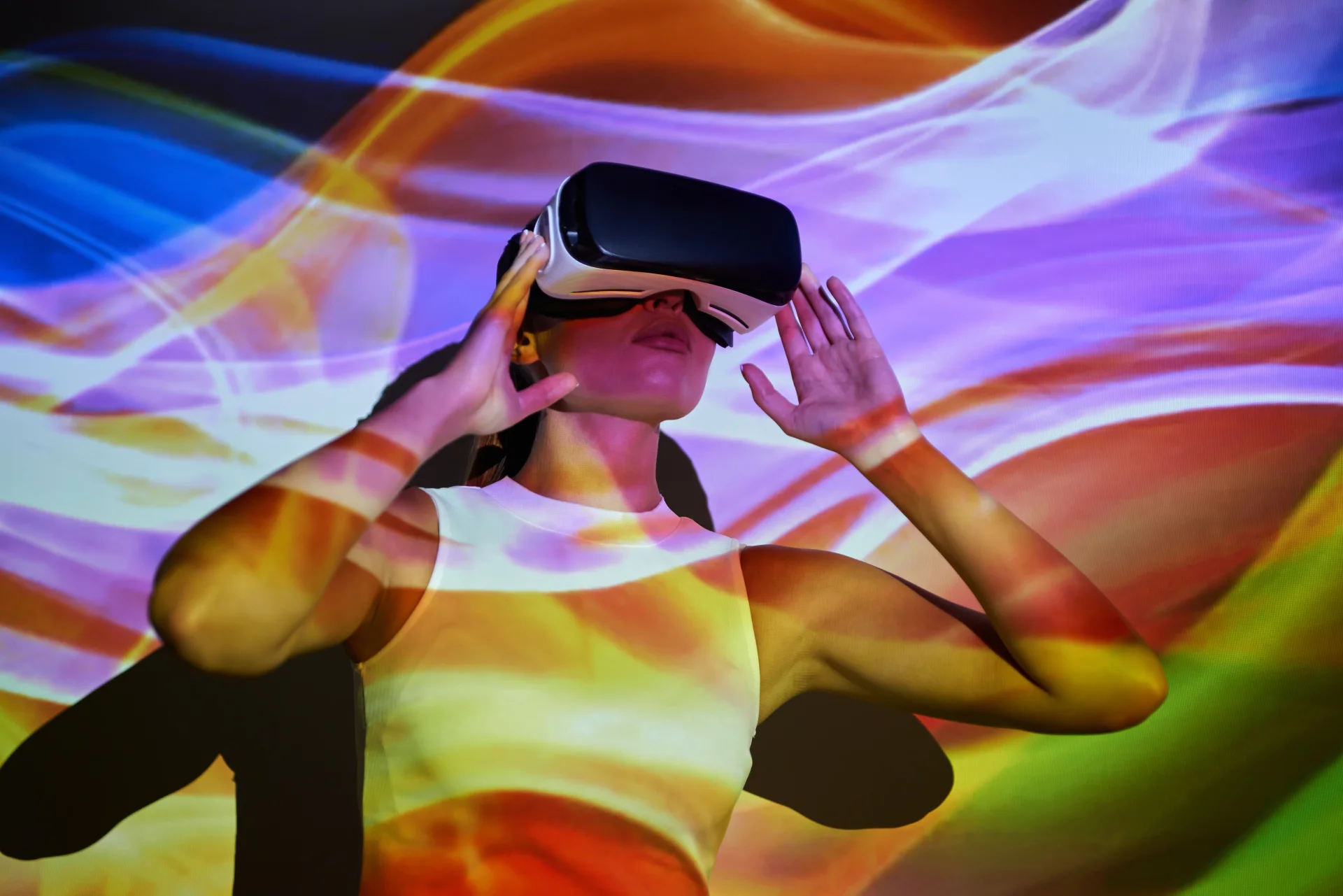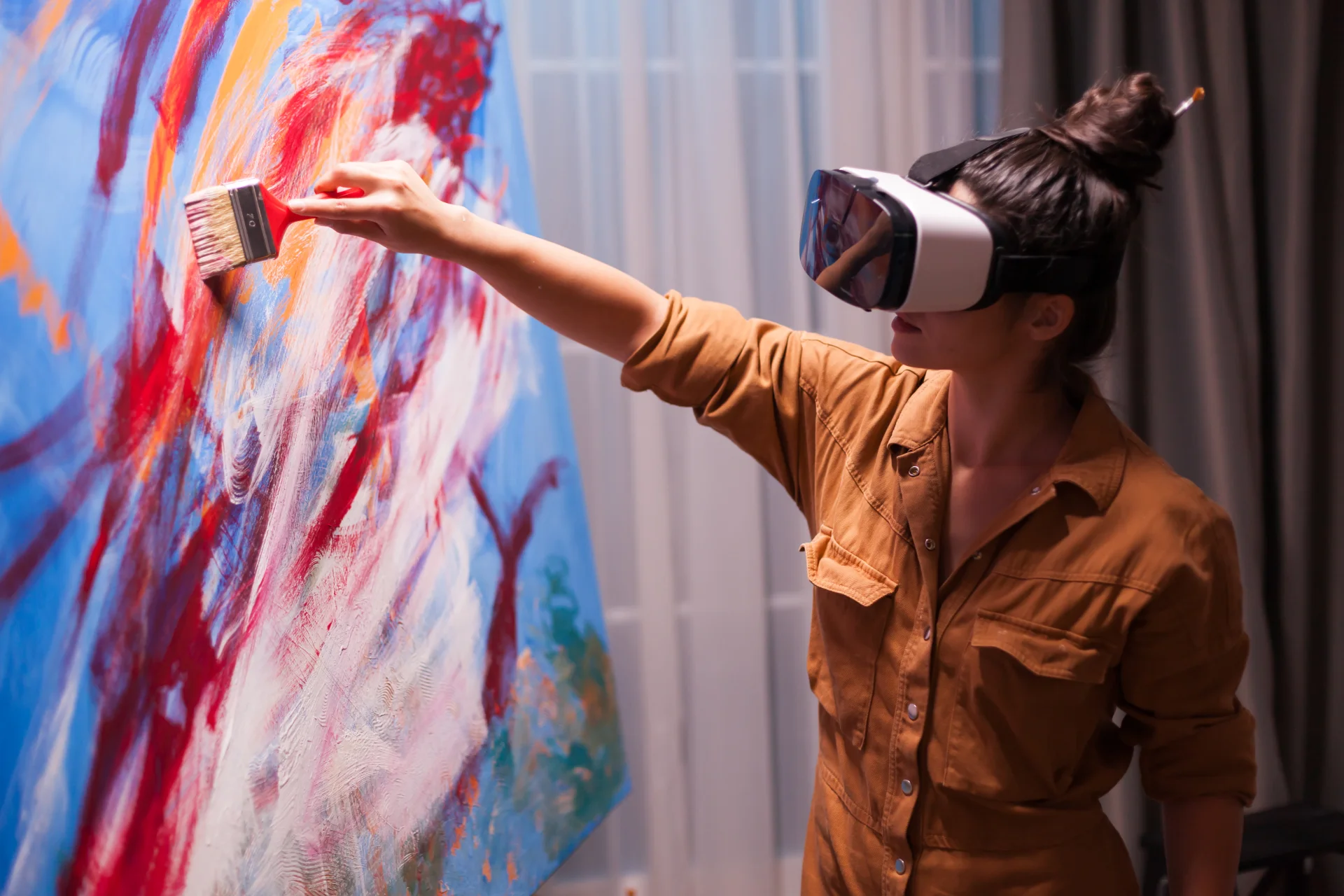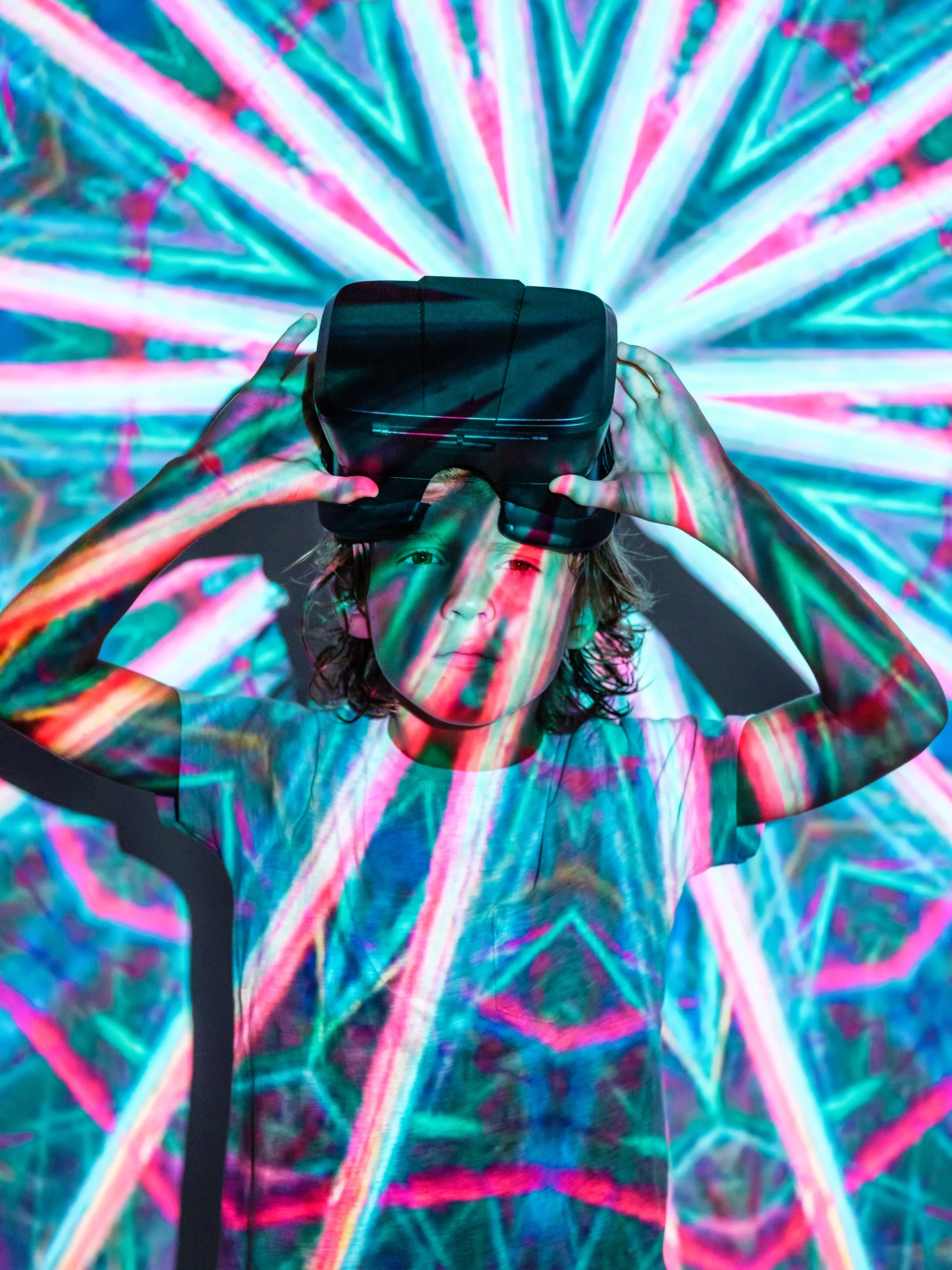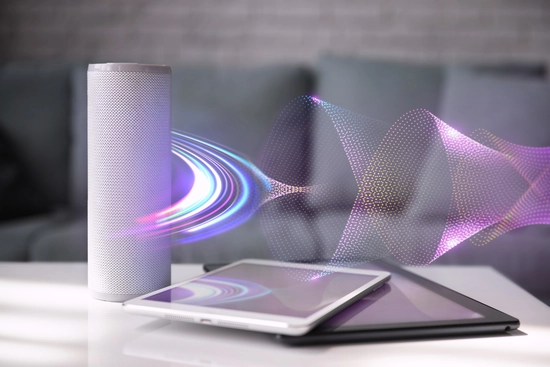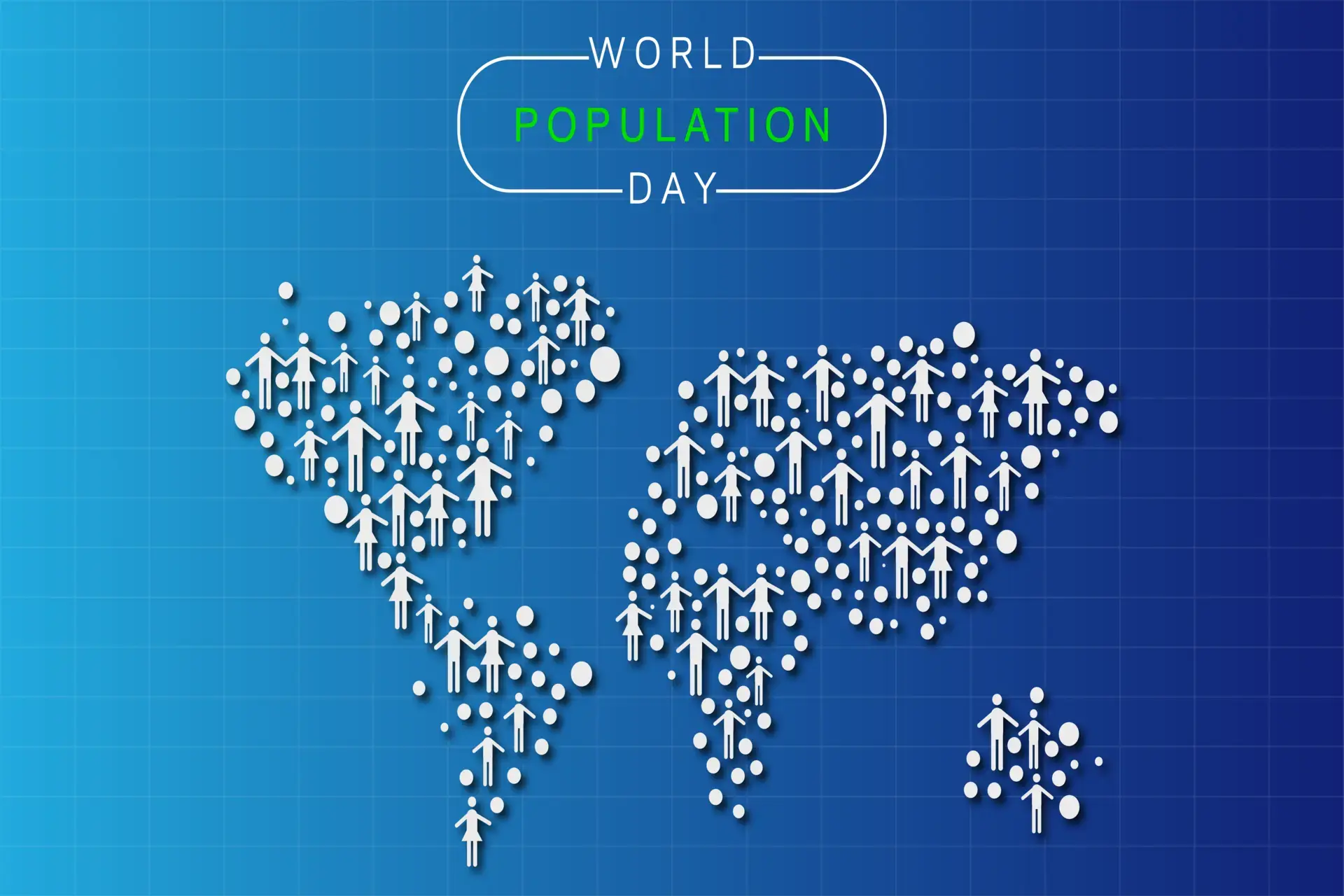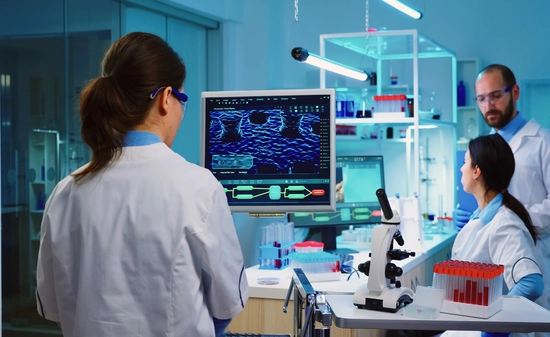In an era marked by rapid technological advancements, the product engineering landscape is undergoing a profound transformation. Emerging technologies like Virtual Reality (VR), Augmented Reality (AR), blockchain, Artificial Intelligence (AI), the Internet of Things (IoT), 3D Printing, and 5G are not just buzzwords; they are reshaping the very fabric of how products are conceived, designed, and brought to market. This article delves into the impact of these technologies on product engineering, exploring how they contribute to more efficient, innovative, and user-centered product development.
The Role of VR and AR in Product Engineering
Virtual Reality (VR)
Virtual Reality has emerged as a game-changer in product engineering, offering immersive experiences that were once the realm of science fiction. By creating a completely virtual environment, VR allows engineers and designers to prototype, test, and refine products cost-effectively and rapidly. For instance, in automotive engineering, VR is used to create full-scale models of vehicles, enabling engineers to assess design elements and ergonomics without needing physical prototypes. According to a PwC report, about 36% of automotive companies leverage VR to enhance product development.
Augmented Reality (AR)
Augmented Reality, on the other hand, overlays digital information onto the physical world, enhancing the natural environment with computer-generated inputs. In product engineering, AR is instrumental in improving design accuracy and efficiency. For example, AR can project virtual images of a product onto a real-world workspace, allowing engineers to visualize the end product and make real-time modifications. A study by Deloitte revealed that companies using AR for design and prototyping have seen a 10% reduction in time-to-market, highlighting AR's significant impact on the product development cycle.
Both VR and AR are redefining the approach toward product engineering, offering tools for more precise, efficient, and flexible product development. Integrating these technologies is not just enhancing the design process but also revolutionizing how engineers and stakeholders interact with the product throughout its development lifecycle.
Blockchain's Influence on Product Engineering
Blockchain technology revolutionizes product engineering by enhancing security, transparency, and efficiency. It's particularly transformative in supply chain management, intellectual property protection, and compliance assurance.
Supply Chain Management
Blockchain's ability to create an immutable record of transactions ensures the traceability and authenticity of parts and components. This is crucial in industries like automotive and electronics, where sourcing from a global supply chain is common. By tracking each component's journey from manufacture to assembly, blockchain reduces the risks of counterfeit parts and enhances quality control.
Intellectual Property Protection
The secure and transparent nature of blockchain is instrumental in managing intellectual property, especially for digital and software products. It offers a reliable method to record and timestamp innovations, safeguarding copyrights and patents. This is particularly relevant in industries driven by constant innovation, where protecting intellectual assets is critical.
Compliance and Quality Assurance
In sectors like pharmaceuticals, blockchain plays a pivotal role in ensuring product compliance with regulatory standards. It provides a transparent record of manufacturing processes, ingredient sourcing, and distribution chains, crucial for quality assurance and safety verifications.
Integration of AI and IoT in Product Engineering
The synergy of Artificial Intelligence (AI) and the Internet of Things (IoT) is ushering in a new era of smart, interconnected product engineering.
Predictive Maintenance and Operational Efficiency
AI's data processing capabilities and IoT's network of sensors are revolutionizing maintenance strategies in manufacturing and other industries. AI can predict potential equipment failures by analyzing data patterns, enabling preemptive maintenance and reducing costly downtime.
Smart Product Development and Enhanced User Experience
AI and IoT are at the forefront of developing intelligent products that adapt to user needs and environmental conditions. For example, in consumer electronics and home automation, these technologies facilitate the creation of products that are intuitive, energy-efficient, and responsive to user behavior.
Data-Driven Insights and Decision Making
Integrating AI and IoT allows for collecting and analyzing vast amounts of real-time data, driving more informed decision-making in product design and lifecycle management. This is especially valuable in agriculture, where precision and resource efficiency are paramount.
Market Growth and Investment Trends
The increasing investment in AI and IoT technologies highlights their growing significance in product engineering. These technologies are pivotal across various sectors, from smart home devices to industrial automation, indicating their broad impact on future product development and innovation.
Blockchain's role in enhancing product integrity and the AI-IoT combination's contributions to product functionality and efficiency represent significant advancements in product engineering. They streamline current processes and pave the way for innovative approaches and technologies in future product development.
Emerging Trends in Product Engineering
Product engineering continuously evolves, with several emerging trends significantly impacting its practices and processes. These trends include low-code development, Progressive Web Apps (PWAs), outsourcing, microservices architecture, Web 3.0, DevSecOps, and cloud computing. Each trend brings unique advantages and challenges, reshaping the product engineering landscape.
Low-Code Development
Low-code development platforms democratize software development, allowing individuals with minimal coding knowledge to create applications. This approach significantly accelerates the development process, reduces the need for specialized programming skills, and lowers costs. It enables companies to prototype and iterate on their products rapidly, making the development process more agile and responsive to market needs.
Progressive Web Apps (PWAs)
PWAs offer a blend of web and mobile app experiences, providing the accessibility of a web application with the functionality of a mobile app. This technology is particularly beneficial for product engineering as it allows for the creation of fast, reliable, and engaging applications. PWAs can work offline, load quickly, and integrate seamlessly with device hardware, enhancing user experiences.
Outsourcing
Outsourcing remains a crucial trend in product engineering, offering access to global talent, cost reduction, and increased efficiency. Companies can leverage specialized expertise worldwide, focusing their internal resources on core business activities. However, it also requires effective communication and project management to ensure quality and timely delivery of products.
Microservices Architecture
Microservices architecture involves developing an application as a collection of small, independent services. This approach allows for greater scalability, flexibility, and faster deployment times. It enables teams to update specific parts of an application without impacting the entire system, facilitating continuous improvement and quicker response to market changes.
Web 3.0
Web 3.0 represents the next internet generation, characterized by decentralized networks and AI-driven applications. In product engineering, Web 3.0 technologies such as blockchain and decentralized data storage offer new opportunities for creating secure, transparent, and user-centric products. They also pose challenges in terms of data security and privacy.
DevSecOps
DevSecOps integrates security practices within the DevOps process. This trend emphasizes the importance of security in the early stages of product development, ensuring that security considerations are an integral part of the development lifecycle. Doing so helps mitigate risks and reduce the potential for security breaches.
Cloud Computing
Cloud computing continues to be a transformative force in product engineering. It provides scalable infrastructure, storage, and computing resources, enabling companies to develop and deploy products more efficiently. Cloud platforms facilitate collaboration, remote working, and the integration of advanced technologies like AI and big data analytics into the product engineering process.
Each trend contributes to a more dynamic, efficient, and innovative product engineering landscape. As they continue to evolve, they will unlock new possibilities and challenges, shaping the future of product development and engineering.
Challenges and Future Outlook in Product Engineering
Integrating emerging technologies into product engineering presents several challenges but also opens doors to exciting future possibilities.
Challenges in Integration
- Technological Complexity
Integrating advanced technologies like AI, IoT, and blockchain requires a deep understanding and expertise, which can be a barrier for many organizations.
- Security Concerns
As products become more connected and data-driven, ensuring the security and privacy of user data becomes increasingly complex.
- Cost and Resource Allocation
Adopting new technologies often requires significant investment in terms of cost and resources. Organizations must balance these investments with expected returns.
- Change Management
Implementing new technologies necessitates organizational structure, processes, and culture changes, which can be challenging to manage effectively.
Predictions and Future Trends
- Increased Adoption of AI and Automation
AI's role in product engineering is expected to grow, with Gartner predicting that by 2025, customer service organizations that embed AI in their multichannel customer engagement platform will elevate operational efficiency by 25%.
- Growth in IoT Integration
According to Fortune Business Insights, the IoT market is projected to grow to over $1 trillion by 2027, indicating a greater integration of IoT in product engineering.
- Sustainability Focus
Future product engineering will likely emphasize sustainability, with eco-friendly designs and green technologies becoming increasingly important.
- Customization and Personalization
The trend towards personalized products, driven by consumer data and AI, will continue to grow, offering unique user experiences.
- Collaborative and Remote Work Environments
The rise of cloud computing and collaboration tools will further enable remote and distributed product engineering teams.
Despite its challenges, the integration of emerging technologies in product engineering is paving the way for a more innovative, efficient, and user-centric future. As these technologies continue to evolve, they will profoundly shape the landscape of product engineering.
While emerging technologies like VR, AR, blockchain, AI, and IoT are revolutionizing product engineering, their integration presents challenges in complexity, security, cost, and organizational change. The future of product engineering is promising, with trends like increased AI and IoT integration, a focus on sustainability, and personalized product designs. However, navigating these changes requires balancing embracing innovation and addressing the inherent challenges. The evolution of product engineering is not just a technological journey but also an organizational one, demanding adaptability and forward-thinking strategies.
Embrace the future of product engineering with Coditude. Our team will help you successfully integrate these groundbreaking technologies into your business strategy. Stay ahead of the curve, overcome challenges, and unlock innovative solutions. Transform your product development journey today!


